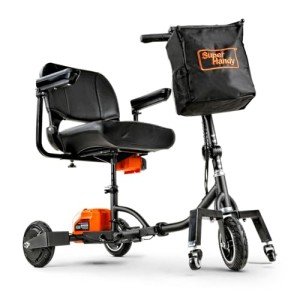Understanding Mobility Aids: Enhancing Independence and Quality of Life
As society continues to age and people increasingly look for methods to maintain self-reliance, the need for mobility aids has actually never been more significant. Mobility aids, which include a series of devices designed to help individuals with walking or moving, play a crucial role in promoting mobility, enhancing safety, and enhancing general quality of life. This post will explore the different types of mobility aids, their advantages, factors to consider for selection, and respond to some often asked concerns.
Kinds Of Mobility Aids
Various mobility aids are readily available, each developed to address specific requirements. click the up coming webpage following table summarizes some of the most common types of mobility aids and their features.
| Kind Of Mobility Aid | Description | Best Suited For | Key Features |
|---|---|---|---|
| Walking canes | A portable stick offering support and balance. | Individuals who need minimal support. | Light-weight, portable, adjustable height. |
| Walkers | Four-legged frames supplying stability. | Those requiring substantial support while walking. | Foldable, some with wheels, included security functions. |
| Rollators | Wheeled walkers with a seat for resting. | Individuals needing mobility with the choice to rest. | Brakes, baskets for individual products, adjustable height. |
| Wheelchairs | Chairs with wheels for people with minimal mobility. | Those unable to walk or needing extensive assistance. | Handbook or powered alternatives, adjustable seating. |
| Scooters | Motorized devices for larger distances. | Individuals with minimal stamina but needing self-reliance. | Different sizes and designs, frequently easily transportable. |
| Crutches | Assistance devices placed under the arms or lower arms. | People recovering from lower limb injuries. | Adjustable, lightweight, needs upper body strength. |
| Stairlifts | Mechanical devices for moving in between floorings. | Users facing obstacles in multi-level homes. | Personalized for different staircases, automated. |
Advantages of Mobility Aids
Mobility aids offer a selection of benefits that can significantly boost the lives of individuals facing mobility challenges. Some notable advantages include:
- Increased Independence: Mobility aids empower people to move easily without relying on others for help, thus enhancing their confidence and self-esteem.
- Enhanced Safety: Using mobility aids can lower the danger of falls and injuries, specifically for older adults or those with balance concerns.
- Improved Quality of Life: By helping with mobility, people can engage in social activities, attend events, and enjoy life more totally, contributing to much better psychological and psychological health.
- Rehabilitation Support: After surgery or injury, mobility aids provide necessary support and stability, helping in recovery and rehab processes.
- Accessibility: Many mobility aids are developed to be used both inside and outdoors, guaranteeing that individuals can browse various environments with ease.
Elements to Consider When Choosing Mobility Aids
Selecting the suitable mobility help requires mindful consideration of numerous factors, including:
| Factor | Factors to consider |
|---|---|
| User's Needs | Examine the level of mobility needed; consider whether the user needs short-term or long-lasting assistance. |
| Physical Limitations | Assess the user's strength, balance, and coordination to identify the very best type of help. |
| Setting | Consider the primary environments where the aid will be utilized, such as home, outdoors, or particular terrains. |
| Weight and Portability | Ensure that the selected device is manageable regarding transportability and storage, especially for outside use. |
| Spending plan | Mobility aids been available in a series of prices; consider insurance protection and available funding options. |
| Adjustability | Choose aids that can be changed for height and comfort to accommodate development or changing needs. |
Frequently Asked Questions About Mobility Aids
1. How do I understand if I require a mobility aid?
Lots of aspects can signify the need for a mobility aid, such as problem strolling or stabilizing, fatigue while standing, or a recent surgical treatment affecting mobility. Consulting with a healthcare specialist can offer guidance customized to private requirements.
2. What types of mobility aids are covered by insurance?
Protection varies in between insurers, but the majority of provide choices for long lasting medical devices, which usually consists of wheelchairs, walkers, and some types of walking sticks. Contact your insurance coverage company for particular protection info.
3. Can mobility aids be utilized outdoors?
Yes, numerous modern-day mobility aids are designed for outside usage. Rollators, scooters, and some walkers are geared up with functions for stability and ease of use on various terrain.
4. How do I keep my mobility aid?
Regular upkeep includes examining for any wear and tear, guaranteeing that parts such as wheels, brakes, and frames are functioning correctly, and cleaning up the devices as needed. Following the manufacturer's guidelines is essential for security.
5. Is there a risk of ending up being dependent on mobility aids?
While some users might end up being reliant on mobility aids, they are created to promote self-reliance and mobility. Slowly using a mobility help can improve confidence and aid maintain physical strength and coordination.
Mobility aids are important tools that empower individuals to overcome physical obstacles, promoting independence and boosting quality of life. By comprehending the various kinds of mobility aids readily available, their benefits, and important elements for factor to consider, families and caregivers can make informed choices that best fulfill the requirements of their enjoyed ones. With the ideal assistance, those with mobility difficulties can lead satisfying and active lives, complimentary to check out the world around them.

